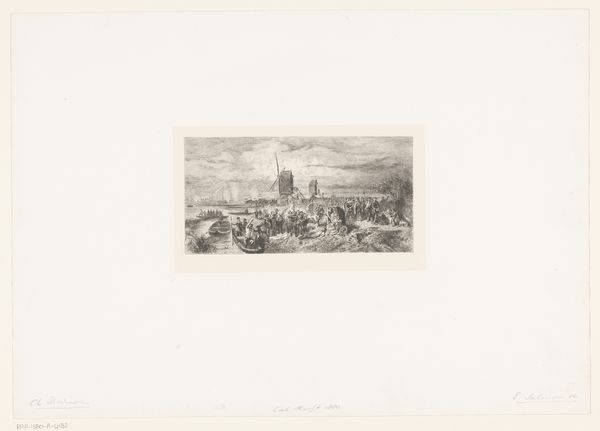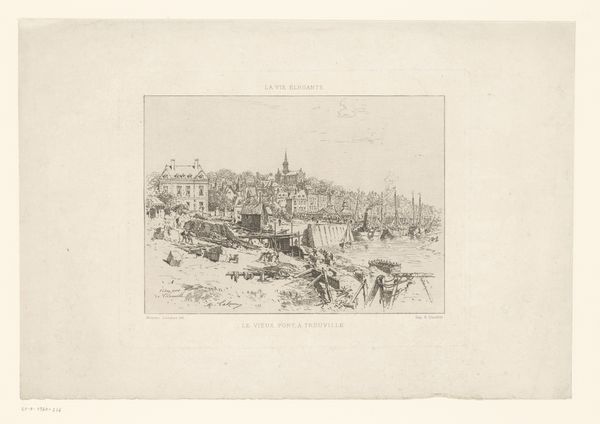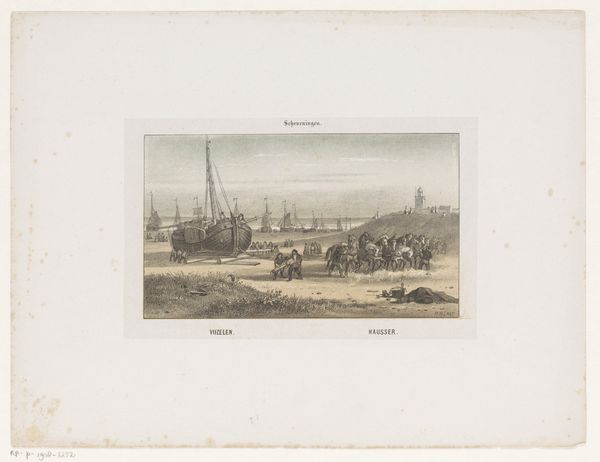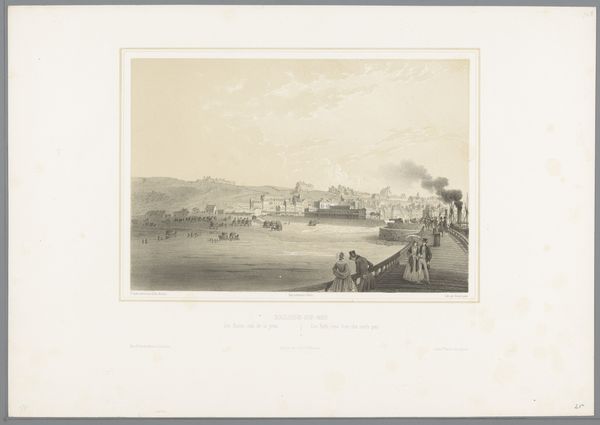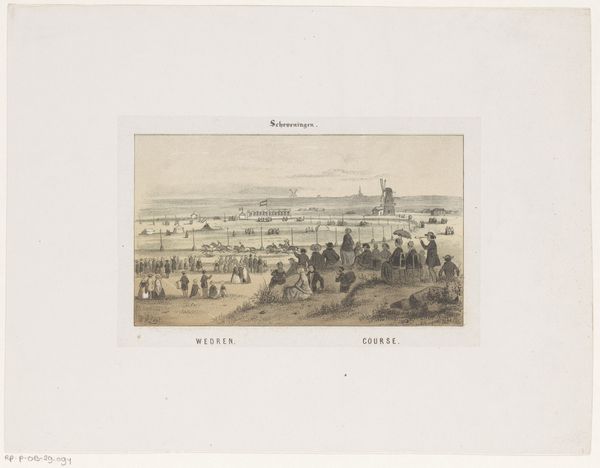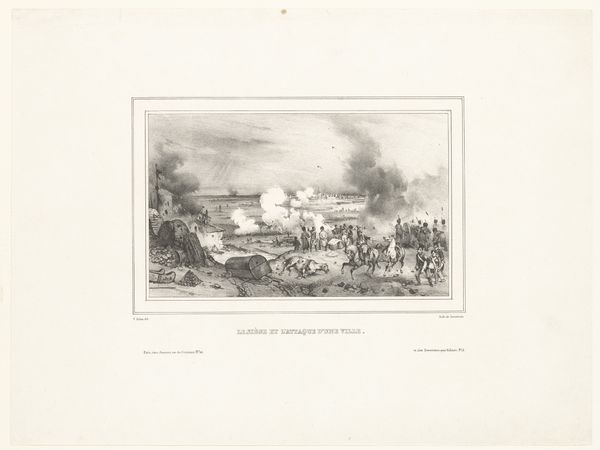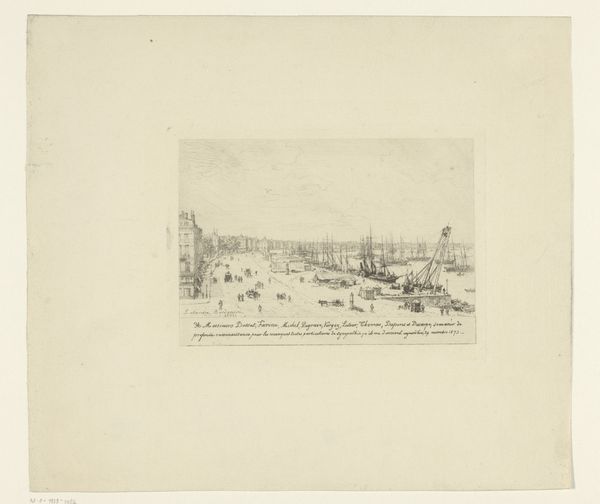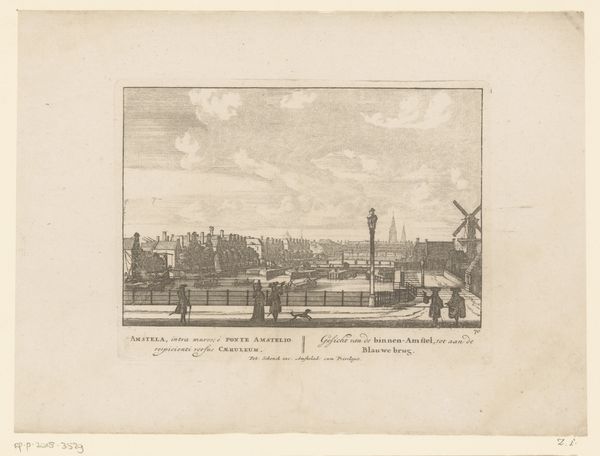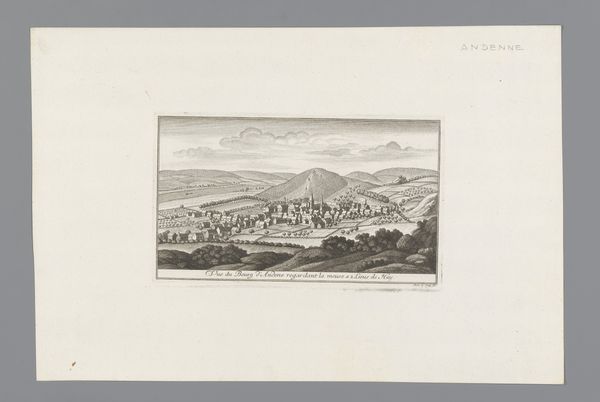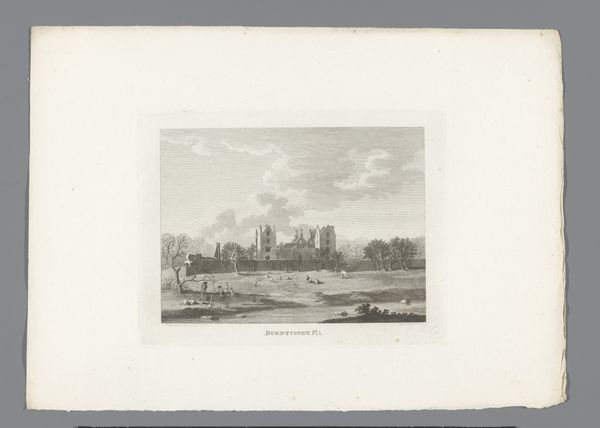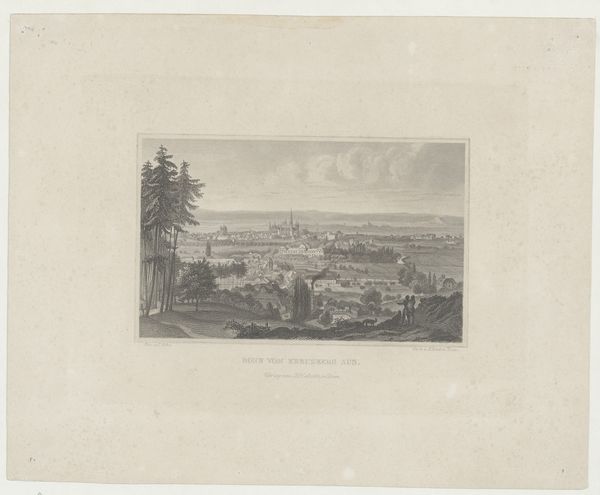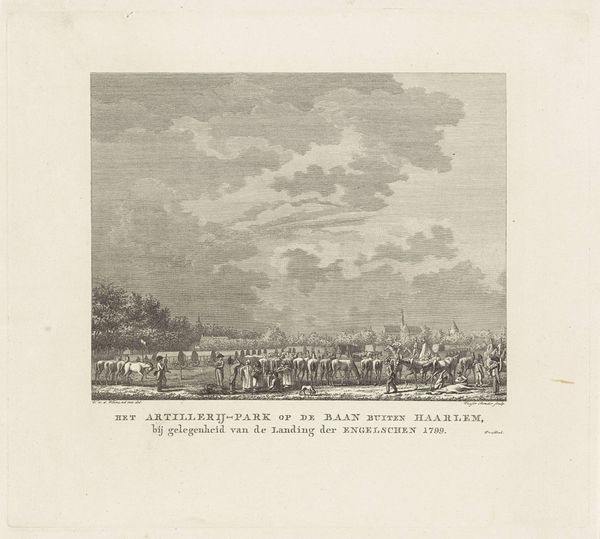
print, etching, engraving
# print
#
etching
#
landscape
#
figuration
#
horse
#
genre-painting
#
engraving
#
realism
Dimensions: height 124 mm, width 145 mm
Copyright: Rijks Museum: Open Domain
Curator: Looking at this print, "Paardenmarkt", which roughly translates to "Horse Market," by Frédéric Auguste La Guillermie, and judging by the style and its period from 1851 to 1951, the first thing I notice is the incredibly detailed depiction of a bustling marketplace. It feels almost documentary-like. Editor: There is such restraint with the line work. This isn't some grand heroic painting, it's quite humble. I'm drawn to how the etching captures the everyday commerce and labor that sustained communities during that period. What can you tell me about how marketplaces like this functioned then? Curator: Well, these horse markets were central to the economic and social lives of many communities. It was a place where farmers, traders, and even military personnel would come to buy, sell, or trade horses, which, of course, were crucial for transportation, agriculture, and warfare. Think about the power dynamics involved—the seller, the buyer, even the horses themselves as commodities. Editor: Absolutely. The artist’s choice of etching and engraving seems perfectly aligned with portraying this material reality. Consider the sheer number of etched lines needed to convey the scene's activity; this would have been physically demanding work in itself. The texture it creates communicates the gritty, palpable atmosphere of the marketplace. Curator: And let’s not forget the political context. From the mid-19th to the mid-20th century, we're seeing immense social changes – industrialization, urbanization. Yet, these older market traditions persisted and reveal something crucial about the era. Prints like this offer vital insights into the negotiation between tradition and progress in those days. They were documenting scenes that could well be gone tomorrow. Editor: So true. I'm seeing that the value isn't necessarily the beauty of the horse. These are animals of labor; what they do and what they cost seems like the driving force here, and the artist seemed keen to show that in detail. How accessible would you say prints like these were to people? Curator: Exactly! And the original audience may not be the fine art collectors we have today. Prints such as this could reach a broad audience due to their relative affordability, shaping popular understanding and views of such important market practices of their era. They become political acts, preserving scenes that rapid industrial changes could well soon erase entirely. Editor: This conversation's got me appreciating that while understated, it communicates more than meets the eye upon first looking at it. Curator: Precisely, an unassumingly significant glimpse into a bygone marketplace.
Comments
No comments
Be the first to comment and join the conversation on the ultimate creative platform.
